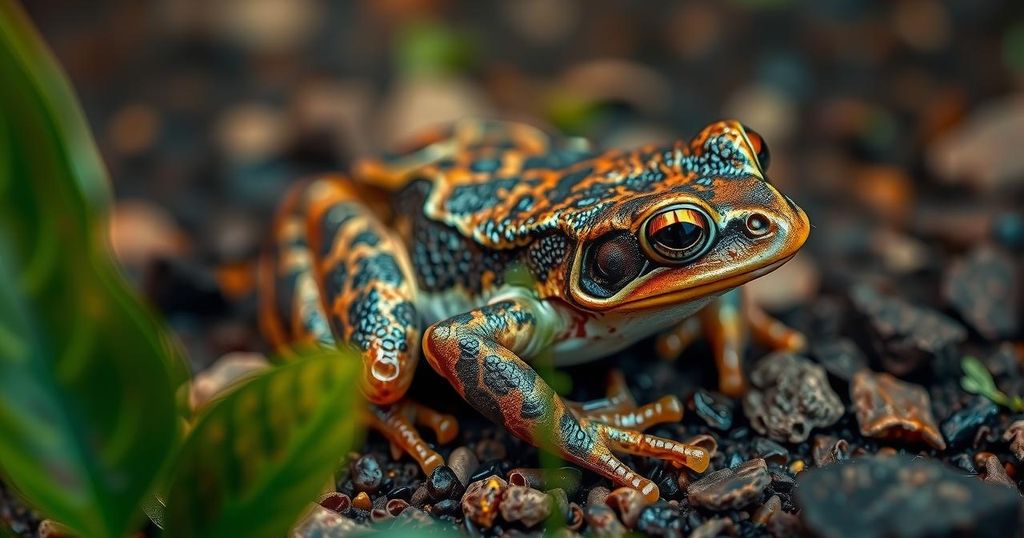Impact of Climate Change on Frog Habitats: A Major Concern for Amphibians

A new study reveals that frog habitats may suffer significant drying due to climate change, with potential losses of 6.6% at a 2°C rise and up to 33% at 4°C. This highlights an urgent need to explore the impact of moisture loss on amphibians, as 39% are already at risk, emphasizing their vulnerability to these environmental shifts.
Research has demonstrated that climate change poses a significant threat to amphibian populations, particularly frogs and toads, as their habitats are increasingly at risk of drying up. A recent study published in Nature Climate Change highlights that a global temperature rise of 2°C could lead to 6.6% of critical frog habitats becoming arid, while an increase of 4°C may result in a staggering loss of 33%. This alarming trend underscores the urgent need to examine the implications of climate-induced drying on amphibians, which are already facing tremendous challenges due to prior climate shifts. The authors of the study emphasize that understanding the impact of temperature elevations and severe moisture deficits is crucial for the conservation of these species, as their delicate skin requires consistent moisture for physiological functions. With existing data indicating that 39% of amphibian species are already listed as threatened by the International Union for Conservation of Nature (IUCN), the necessity for focused research on the interplay between climate change and amphibian vulnerability is more essential than ever.
The ongoing effects of climate change are shifting global weather patterns, resulting in increased temperatures and the likelihood of drought in various regions. Frogs and toads, as part of the class Amphibia, possess thin, permeable skin that requires moisture to facilitate gas exchange, making them particularly sensitive to changes in their habitats. Previous studies have indicated that a substantial proportion of amphibian species are already experiencing declines, with many classified as endangered. The recent research presented in Nature Climate Change aims to provide insights into how projected temperature increases will exacerbate habitat loss for these water-dependent species, ultimately threatening their survival.
In conclusion, the potential loss of frog habitats due to climate change’s drying effects represents a critical challenge for amphibian conservation efforts. As environments become increasingly arid under projected temperature rises, a focused approach to study and protect these vulnerable species is urgently warranted. Without proper intervention and understanding of the environmental changes affecting amphibians, there is a substantial risk of further biodiversity loss within this sensitive group of animals.
Original Source: cosmosmagazine.com






